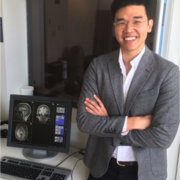Taking advanced diffusion imaging to the clinic for pediatric patients with ADHD
We propose to develop clinically feasible methods for the acquisition and analysis of advanced diffusion magnetic resonance imaging (dMRI) of pediatric patients and apply it to study micro and macro level pathology in attention-deficit hyperactivity-disorder (ADHD). Advanced dMRI techniques can provide details about the layout of white matter pathways in the brain, that are not possible using the current clinical standard of diffusion tensor imaging (DTI). However, these advanced protocols require long scan times and any motion during this time results in artifacts and loss of signal.
As a result, dMRI acquisition of children becomes a challenging task, particularly if they are hyperactive (as in ADHD). In this grant application, we propose several novel algorithms for fast acquisition and reconstruction of advanced dMRI protocols. In particular, we will use our multi-slice acquisition protocol (as opposed to the standard single-slice acquisition) along with a scheme to recover dMRI signals from very few measurements. This will dramatically reduce scan time and make it possible to obtain advanced dMRI scans of pediatric patients (in a clinic). We will validate our methods on several test subjects and then apply them to the study of children and adolescents with ADHD. In particular, we will analyze global connectivity properties of the anatomical neural networks in ADHD along with local diffusion based microstructural properties that may be affected due to pathology. Thus, the improvements suggested in this proposal will bring advanced dMRI protocols to the clinic and allow us to quantify micro and macro level abnormalities in patients with any type of psychiatric or neurological disorder.










